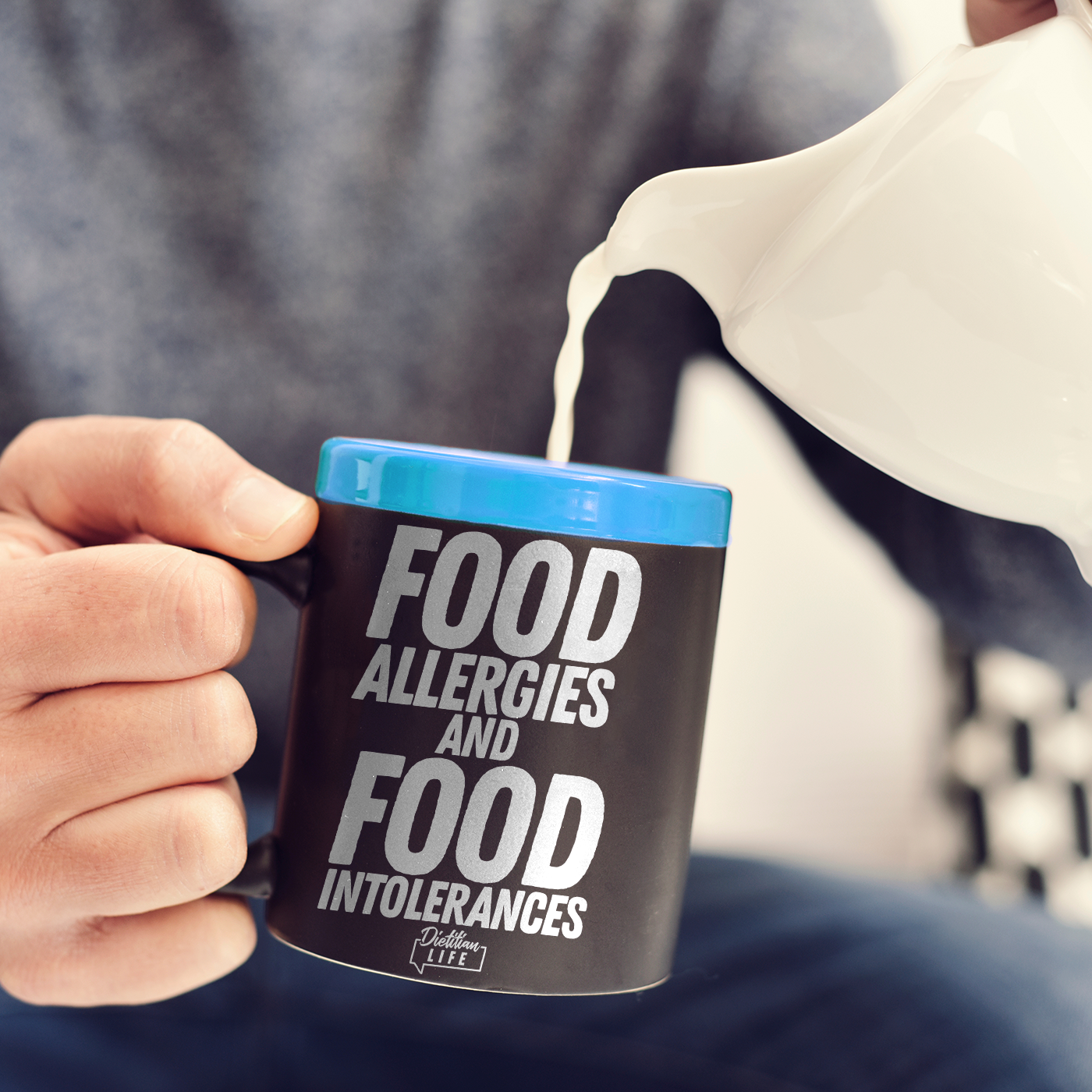Whilst the clinical presentations between food allergies and intolerances are similar, we as dietitians must be able to correctly distinguish between the two, as they require contrasting diagnostic confirmation and therapy.
To begin, let us first familiarise ourselves with the symptoms of each. The main confusion lies between accurately differentiating between mild allergic reactions and symptoms indicative of intolerances.
Allergic symptoms are grouped into mild, moderate and severe reactions and include the following:
Mild to Moderate
- Redness around the face after ingestion or contact
- Eczema
- Hives
- Immediate illness followed by vomiting
- Sore stomach
- Headaches/migraines
- Mild red rash
- Mouth, tongue-tingling
Severe/Can Lead To Anaphylaxis
- Wheeze or persistent cough
- Dizziness
- Difficulty breathing and talking
- Swollen tongue and throat
- Pale and floppy (common in children)
Food intolerant symptoms differ slightly and rarely progress to anaphylaxis. These can include;
- Headaches
- Sinus congestion
- Mouth ulcers
- Nausea
- Hives
- Rashes
- Irritable Bowel Syndrome (IBS)
- Bloating
- Flatulence
Initial Assessment Clues
In conjunction with understanding client symptoms, knowing how quickly they arise following oral intake is equally important for providing clues to distinguish between an allergy and intolerance. Allergies typically present more immediately, or up to 2 hours following ingestion, are reproducible and not dose-dependent. Intolerance symptoms are dose-dependent and therefore often inconsistent in presentation and reaction time.
To draw accurate conclusions for our clients, family history can be a key factor in deciphering the reactions. Clients with a family history of asthma, hay fever or eczema are more likely to suffer from allergies, with 90% of allergy cases showing atopic eczema. Alternatively, a family history of IBS, hives, mouth ulcers and headaches could be more suggestive of food intolerance.
Definitive Diagnostic Testing
For allergies, there are tests that can be used to assist in the diagnosis such as the radioallergosorbent test (RAST), or a skin prick test. These tests are still not foolproof or diagnostic they must be considered in conjunction with the clinical history.
In food intolerance, a diagnosis is even harder to achieve and the only way to diagnose an intolerance is for the client to restrict the diet, “eliminate” the offending contributors and then undertake a reintroduction phase to test foods and ‘diagnose’ the intolerance.
Nutritional Management
The management of both allergies and intolerances are dictated by the degree of restriction and the foods removed. Multiple food restrictions are harder to manage and would require unique adaptations to the client’s diet to maintain adequacy. The goal is, therefore, to build up a tolerance and expand the diet as able to prevent this impact. However, if this is not possible, working with your client to include a wide range of alternative foods and nutrients to meet their requirements is essential in the close monitoring involved in dealing with these clients.
Want to learn more? Get started with a FREE Dietitian Life membership to get exclusive access to the huge library of clinical advice, and practical dietetic resources.

